The creation of user groups is a functionality linked to the User Management of EACAT-Procedures, which facilitates the grouping of users of an entity according to the logic that is to be given. For example, groups can be created according to an organic logic, according to the body's organs (Secretary, Intervention, etc.); with a logic related to each of the competencies (Subsidy Group X, etc.); or the logic that each entity wants to give it.

In the Configuration section and specifically in the User group tab, press the New group button to create a new user group.

Do you need to give it a Name , a Description and select the check Recipient generic delivery? , if applicable. If you press the Recipient check Generic delivery? it means that this group will function as an administrative unit at the time that any source body wants to send you a generic shipment. To the originating entity that wants to send you a generic remittance after selecting the us will appear all the groups created by you that have the Recipient check generic remittance? and you can select one, to which the generic shipment will go.
Then press Create .
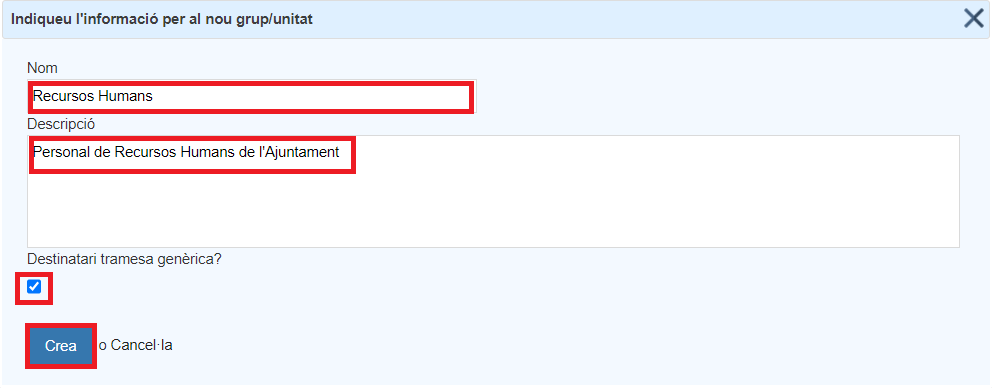
In the case In the case of a department of the Generalitat de Catalunya , when you create a User Group/Unit , in addition to checking the Recipient check generic delivery? you need to add the Registration Data : the name of the registration office, the code that identifies the center and the code of the registration office.

You can edit the group by clicking on its name.

Within the user group, 3 types of actions are allowed:

- Delete the group by pressing the icon

- Edit by pressing the Edit button. This action enables the modification of the group name and its description
- Assign users using the button

The user finder allows you to search for a specific user.

Or you can assign multiple users at once by selecting them and pressing Assign .
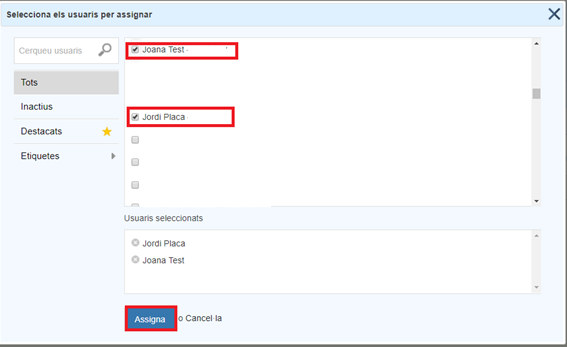
Within the group, there is a functionality to be able to filter between its users. It is very useful in case of groups with a high number of users.

Within a group of users, in the list of users of which they are part, a user can be unassigned from the group by pressing the dark gray cross that appears to the right of each user.
 Before deleting the user from the group, as a security measure, the following message appears:
Before deleting the user from the group, as a security measure, the following message appears:
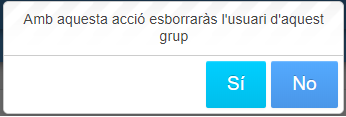
From the My Space tab in the Settings section, you can see which user groups you are assigned to by clicking View Assigned Groups.

If the user is assigned to a user group, it gives us the following information:
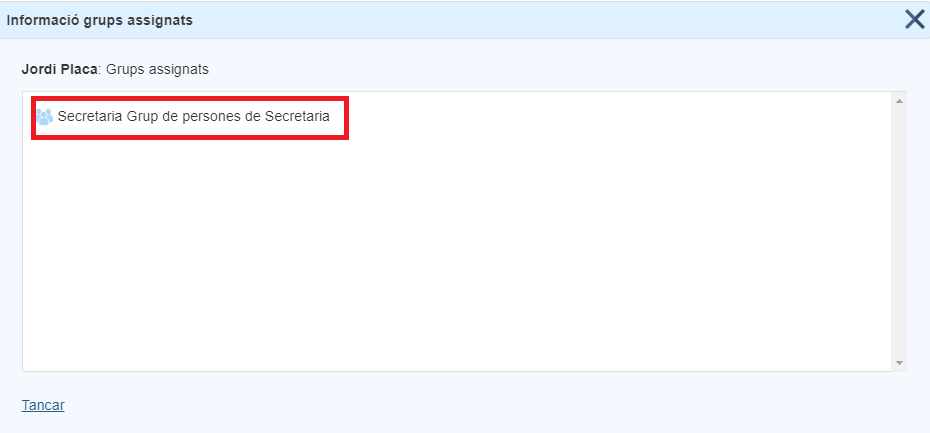 And, if it is not assigned to any user group, it also reports on this fact.
And, if it is not assigned to any user group, it also reports on this fact.
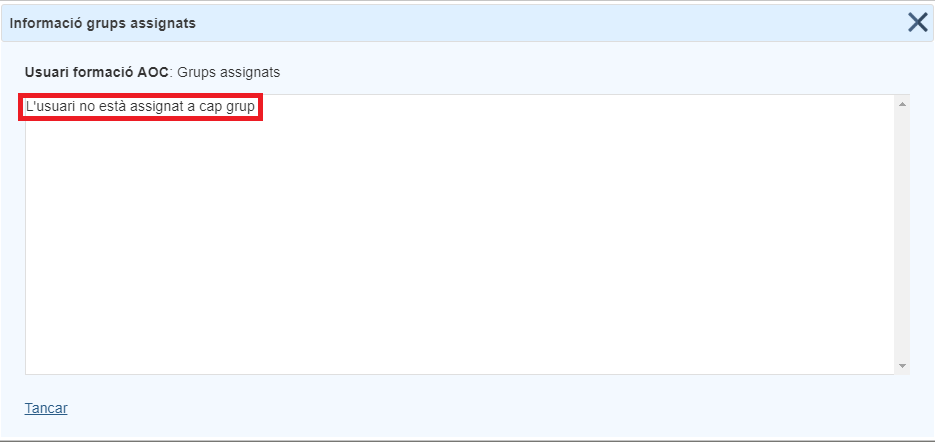
Usergroups have been created to facilitate the management of generic submissions and are currently only used within this generic service.
The two functionalities they have are:
- The assignment of generic messages to groups of users at once, by means of icons

 , which allow them to manage (view and respond, if necessary).
, which allow them to manage (view and respond, if necessary). - Sending generic shipments to a specific administrative unit within the destination entity, which means that users belonging to this user group can view and edit the generic shipment if they check the Recipient generic shipment?
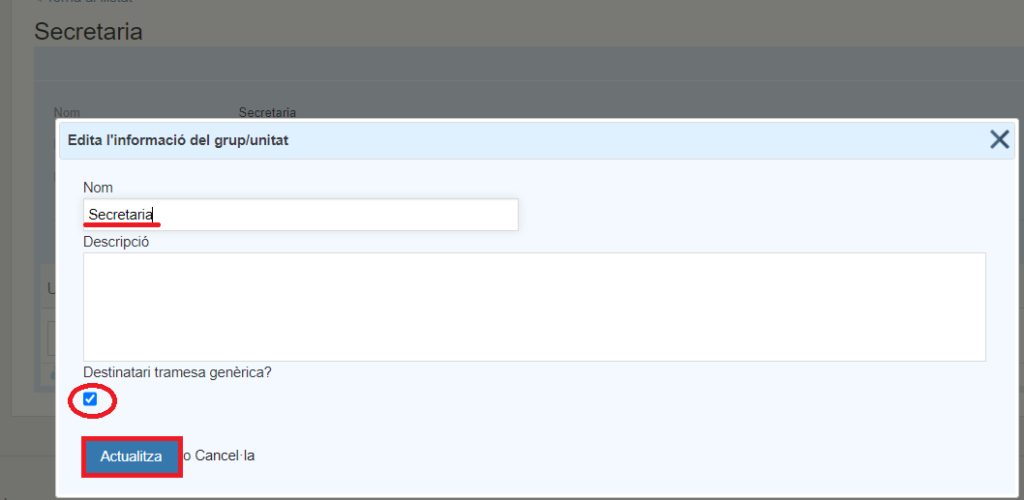
In the case of a department of the Generalitat de Catalunya , when do you create a User Group/Unit , in addition to marking the check Recipient sent generic? you need to add the Registration Data : the name of the registration office, the code that identifies the center and the code of the registration office.

In both cases, the use of user groups streamlines the management of generic consignments, as it makes it possible to assign a generic consignment directly to a group of users without having to assign user to user.